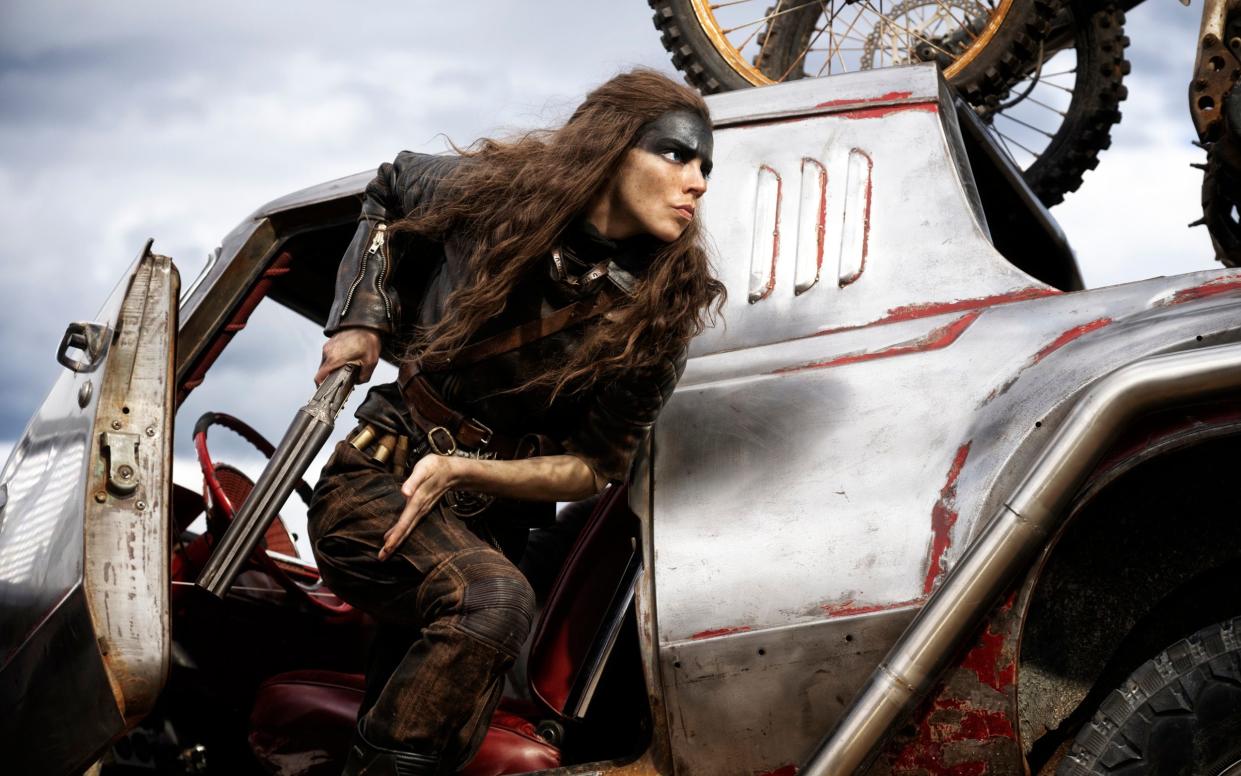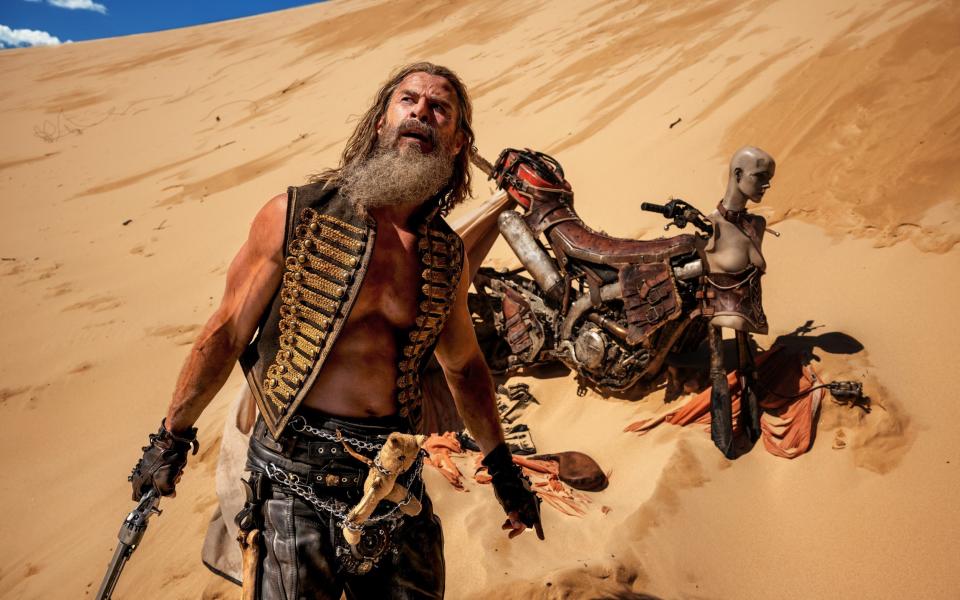Furiosa: A Mad Max Saga: buckle in for cinema at its most soul-pricklingly primal

- Oops!Something went wrong.Please try again later.
- Oops!Something went wrong.Please try again later.
- Oops!Something went wrong.Please try again later.
Alright, stop me if you’ve heard this one before. A train is hammering across an arid landscape when suddenly, out of the wilds, bandits descend. Scrambling along the vehicle’s flanks like ants on a picnic basket, the raiders daringly do battle with the crew. Bodies are yanked from windows, and sizzling bundles of dynamite lobbed back in, as the ground hurtles treacherously past.
This could be a description of a sequence from a western made 100 years ago. In fact, it’s the centrepiece action scene from one of the most anticipated blockbusters of 2024. But then Furiosa, the new Mad Max film, which premiered at Cannes tonight, is cinema at its most soul-pricklingly primal. It’s the sort of film that makes you feel like the past century of Hollywood might have been a detour, and the machine has now been hauled back on course.
Mad Max’s creator, George Miller, is a known silent-film fiend – it was no coincidence that his previous entry in the series, 2015’s Oscar-winning Fury Road, shared both its structure and breakneck spirit with Buster Keaton’s The General. And with its adrenalin-jabs of fast motion and pared-down approach to dialogue (as Furiosa herself – a younger version of the character played in the previous film by Charlize Theron – lead actress Anya Taylor-Joy has only around 30 lines), this latest entry’s debt to the olden days is every bit as plain.
Its debt to the even older days, however, is something else. Furiosa’s posters are selling the film as “a Mad Max saga” – and while the S-word is often just a marketing euphemism for “long”, here it’s entirely correctly applied. Miller and his co-writer Nico Lathouris have structured their screenplay like an epic told by firelight.
In place of plot, we get a run of discrete yet connected tales that feel less like a speculative sci-fi forecast than an attempt from within the film to explain how things got where they are now: storytelling as both myth and map.
Only after around an hour of episodes from Furiosa’s childhood does Taylor-Joy actually appear – at which point she’s immediately forced to come of age as a warrior in a high-speed skirmish that runs for around 15 minutes, but somehow feels like it lasts for both 10 seconds and a couple of weeks. (The stunt work is every bit as wondrous – if less relentless – than Fury Road’s.)

And then there’s a tribal war to survive, waged by her two male captors: Dementus, a chariot-straddling firebrand-cum-diabolical-father-figure played by a smartly cast-against-type Chris Hemsworth, and Immortan Joe (Lachy Hulme), the scrofulous lord of the desert citadel from which Fury Road blasted off at pace.
Despite its vast scope, Furiosa wastes no time setting the scene. It just tears off from the starting line – and like Max always had to, we grab what we can on the hoof. And with Miller in flame-grilled Tolkien mode, there’s much to snatch at: he knows that the sound and feel of things, like the way Hemsworth’s character pronounces piquant ‘puh-quaint’, can evoke more of a world than hours of narration ever could. The film may handle differently to its predecessor, but it’s clearly been tuned by the same engineers. After the pared-down drag racer, here comes the juggernaut.
Cert 15, 140 min. Screening at the Cannes Film Festival; in UK cinemas from May 24

